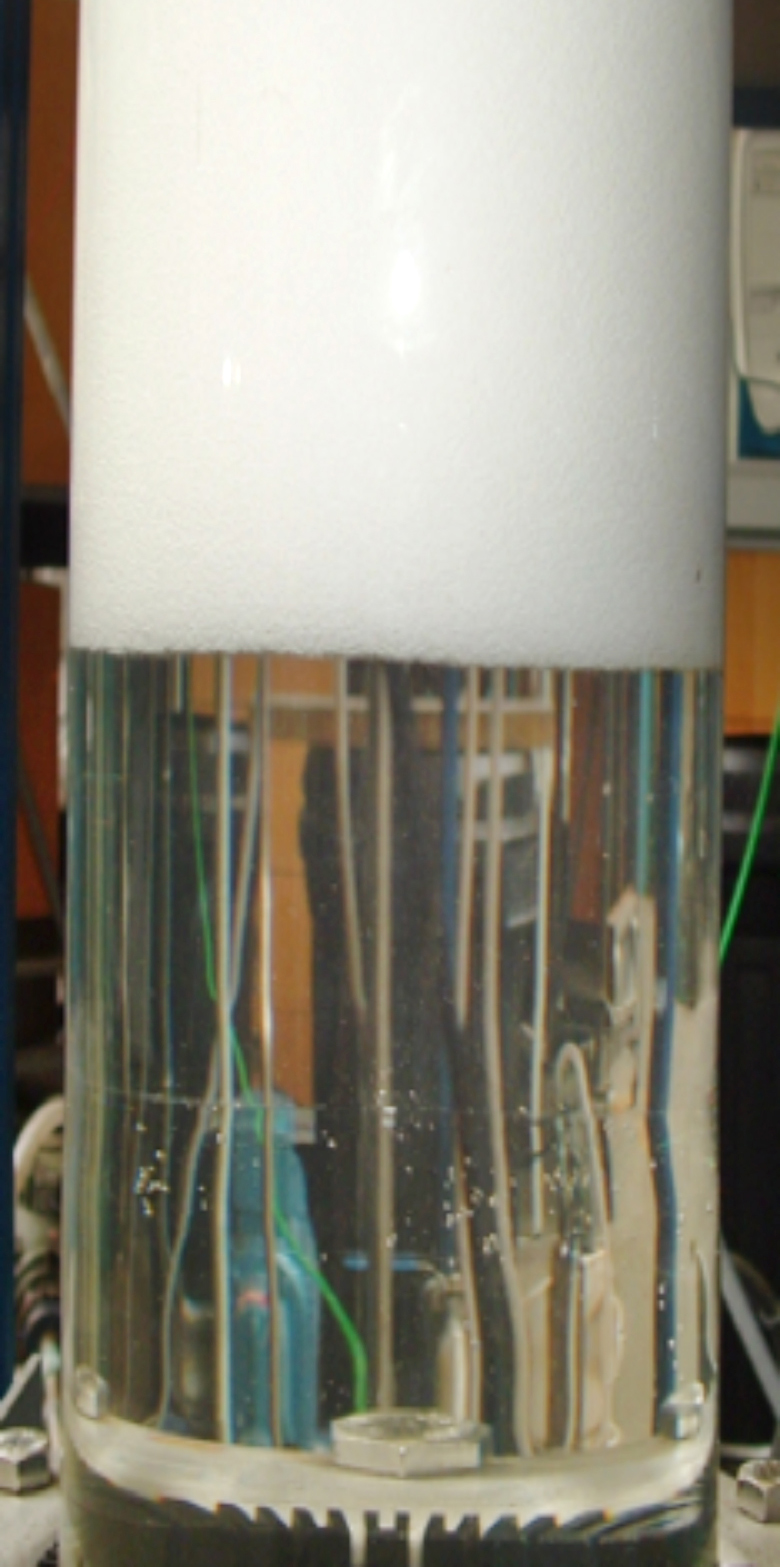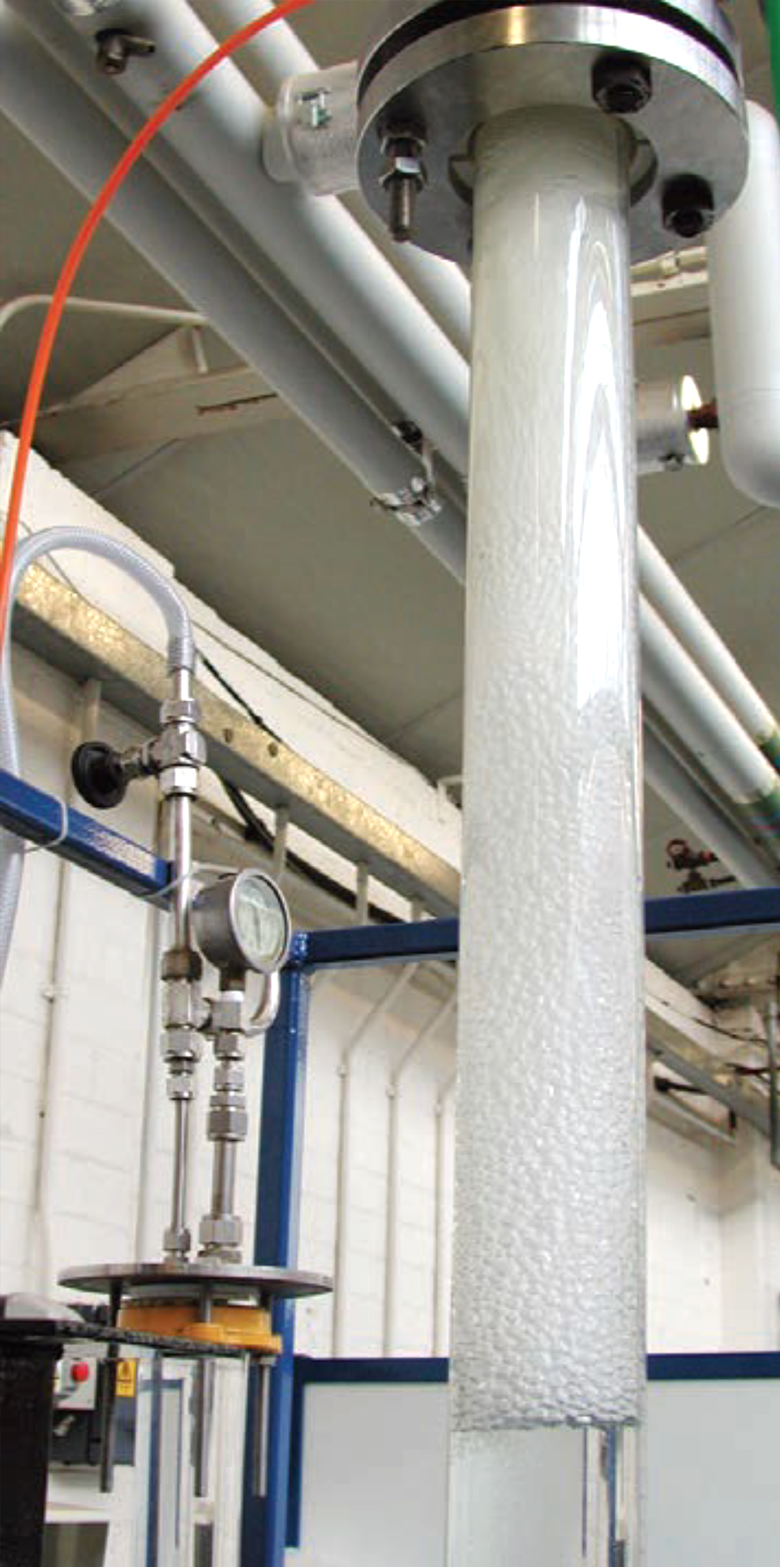

The DGC (Downflow Gas Contactor) Reactor
The DGC (Reactor) with its ability for complete gas absorption is a very effective gas-liquid contacting device which can be used for GAS ABSORPTION (CO2 CAPTURE), EFFLUENT TREATMENT OR CHEMICAL REACTIONS. Many applications of gas-liquid contacting for absorbing gases into liquids are found in the process industries, where a variety of different of simple, compact, flexible design and easy scaleup. Use of the DGC Reactor allows shorter operating and contact times, lower energy requirements, reduced capital and lower operating costs and a smaller footprint – than systems currently used – like a Scrubber.
Many applications of gas-liquid contacting for absorbing gases into liquids are found in the process industries, where a variety of different types of contacting device and methods are used. Contacting devices range from simple stirred tank reactors to complex multi-stage packed bed bubble columns and aim to provide the maximum exposure between the gas and liquid surface for maximum gas-liquid mass transfer. Most applications employ an upflow mode of gas flow with relatively low (< 20%) gas hold- ups along with subsequent gas disengagement with recycling, coalescence and back-mixing problems. Free gas liquid interfaces with gas pockets are formed in these reactors causing additional safety problems. Furthermore, many downflow bubble columns usually operate with jet entrainment of gas and gas bubbles therefore require subsequent disengagement and uneconomic utilisation of gas whilst the interfacial area is not optimised. Use of the DGC eliminates the above disadvantages.
The DGC reactor is an efficient mass transfer gas-liquid contacting/absorption device [column], where a gas and liquid stream are introduced simultaneously through a specially designed entry (SDI) section at the top of a fully flooded column. This high velocity inlet jet stream, generates intense shear and energy, producing a vigorously agitated gas-liquid dispersion in the upper section of the column. This shear causes the break-up of any gas pocket at the inlet and allows the formation at the top of the column, of a vigorously agitated gas-liquid dispersion zone with a very high interfacial area in a small operating volume.


